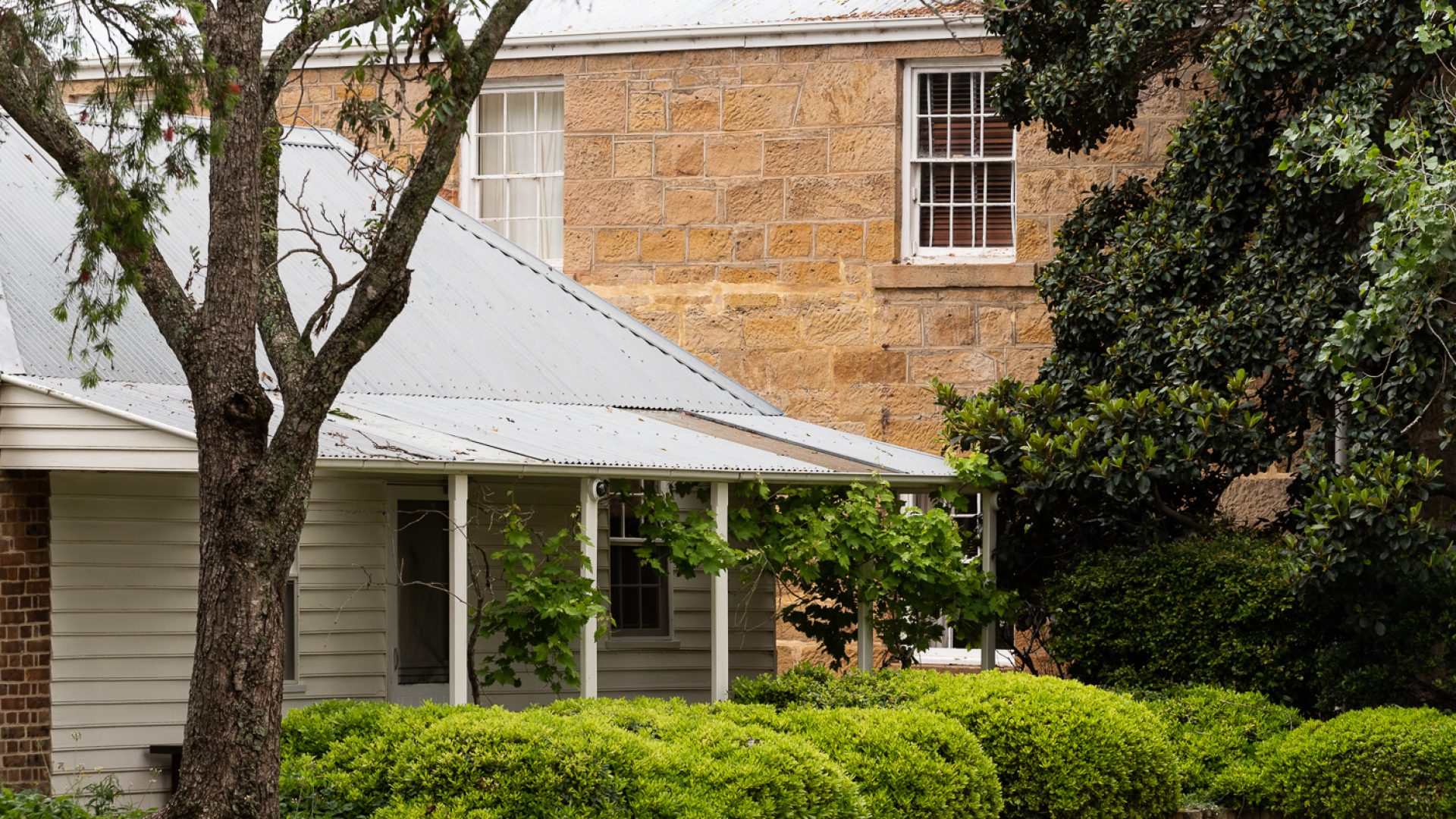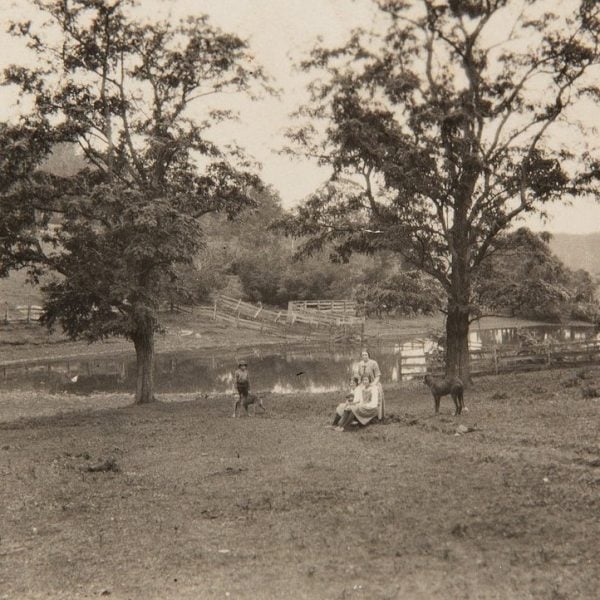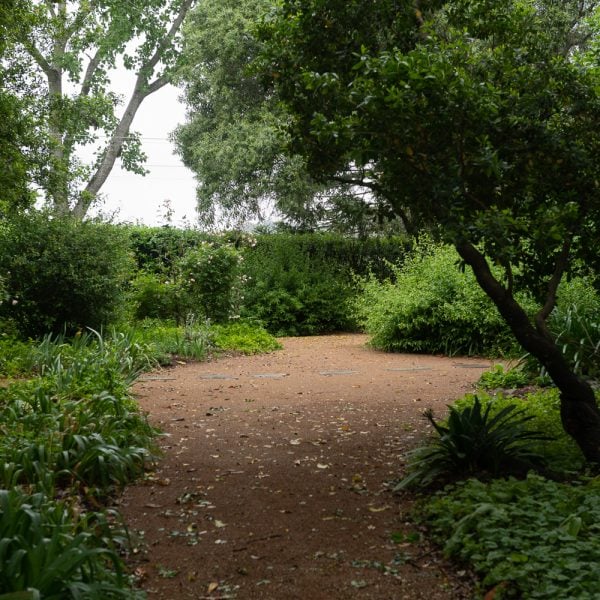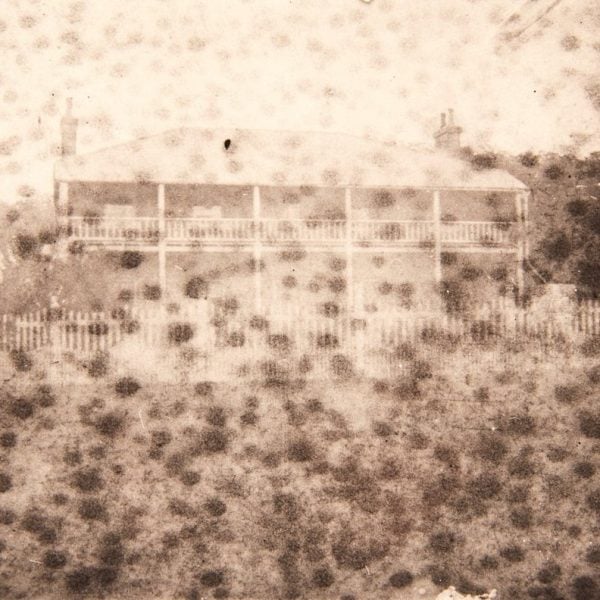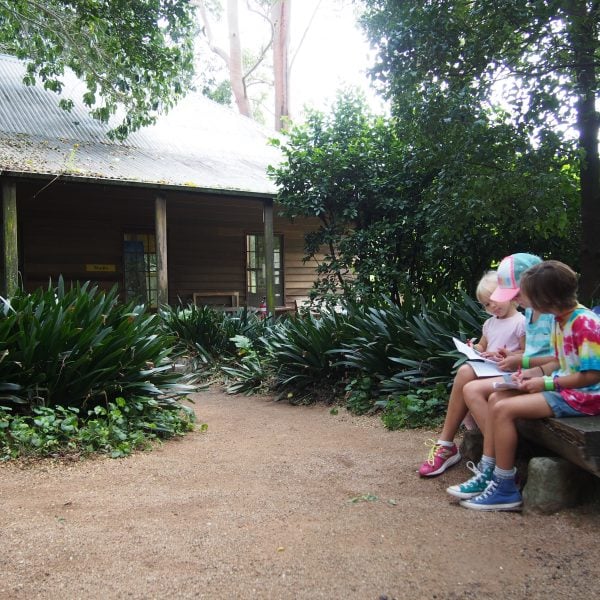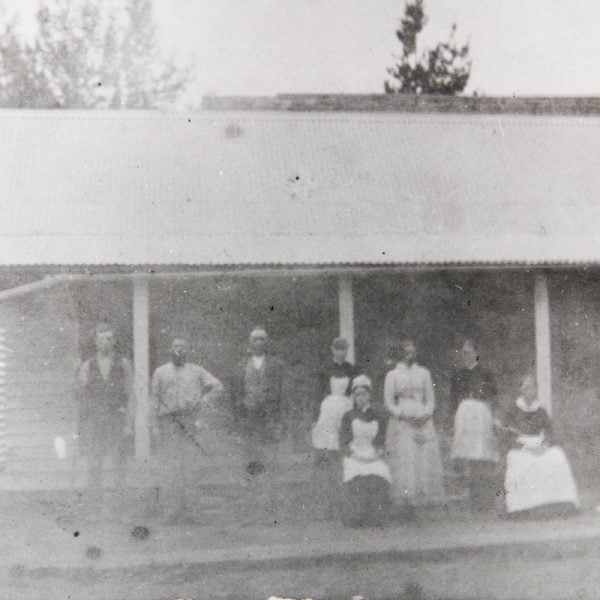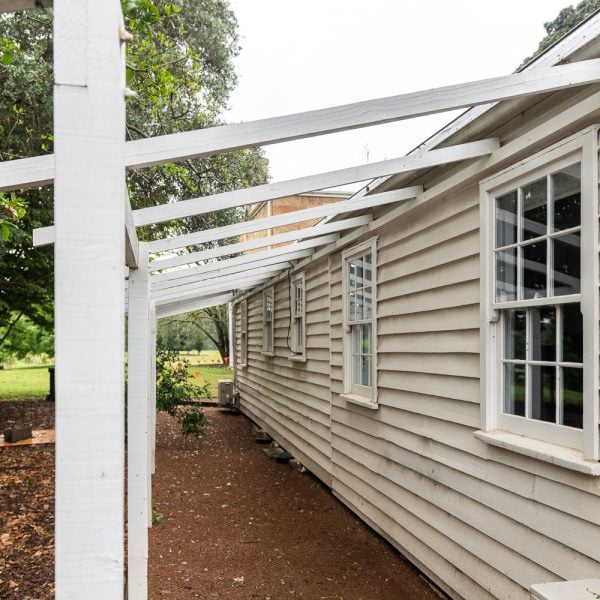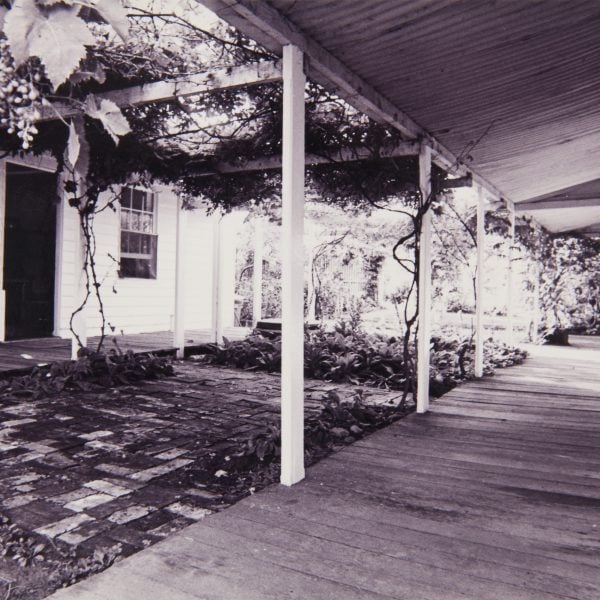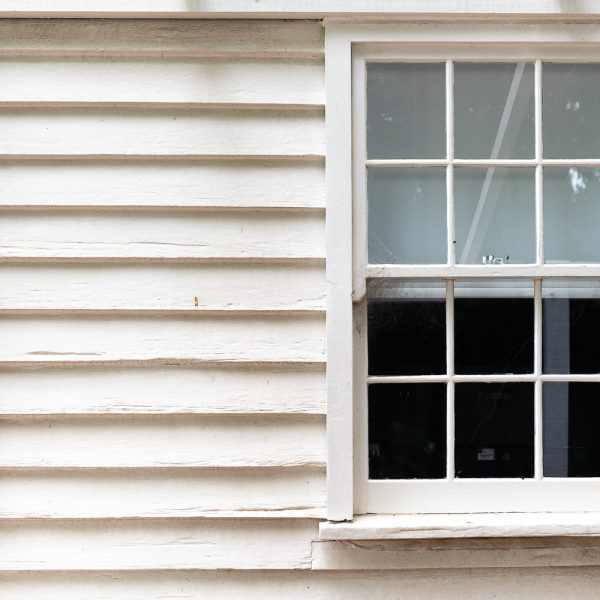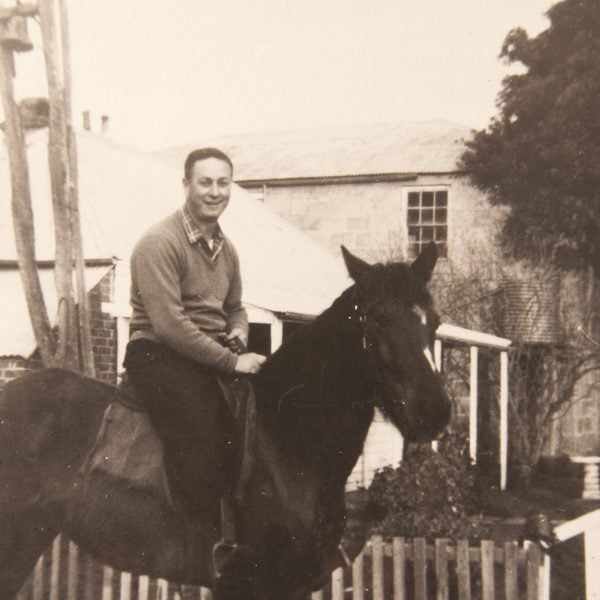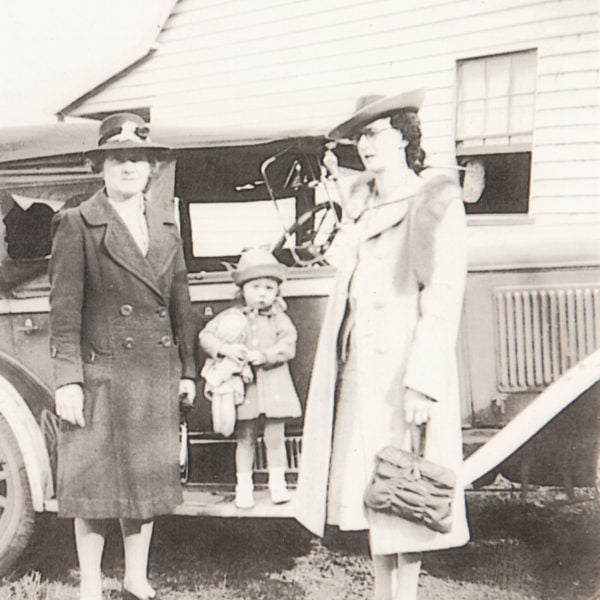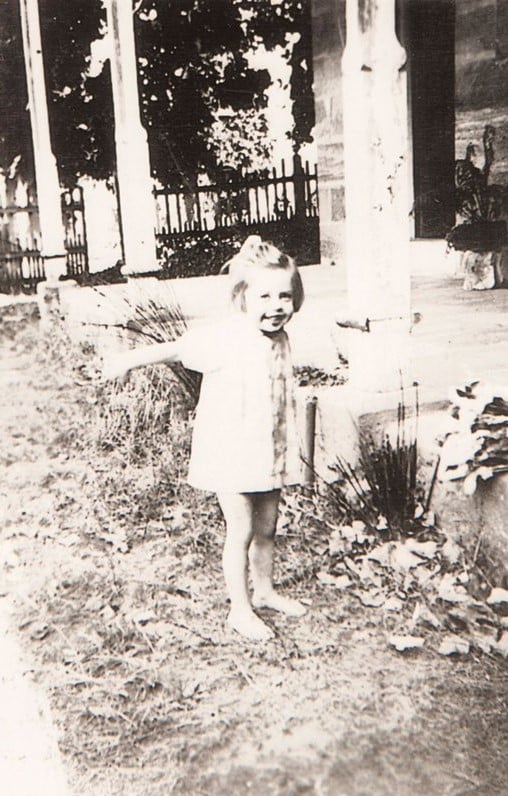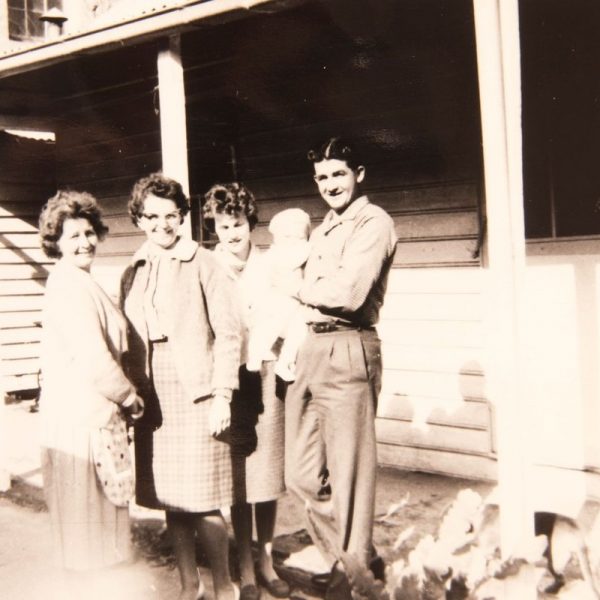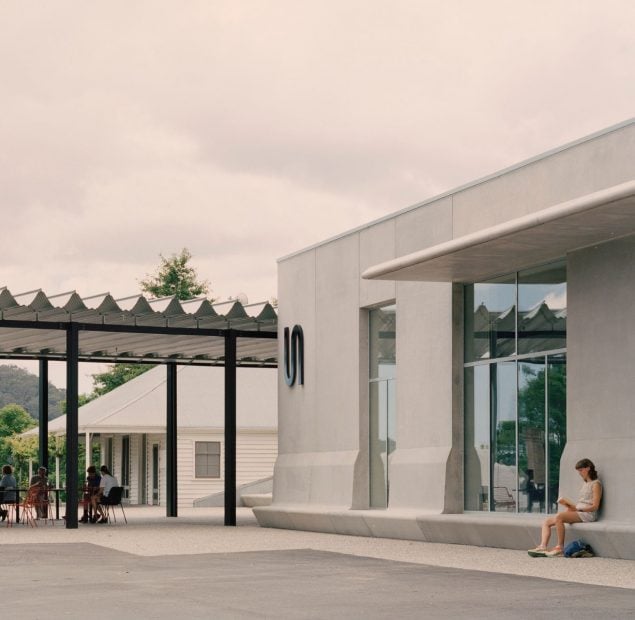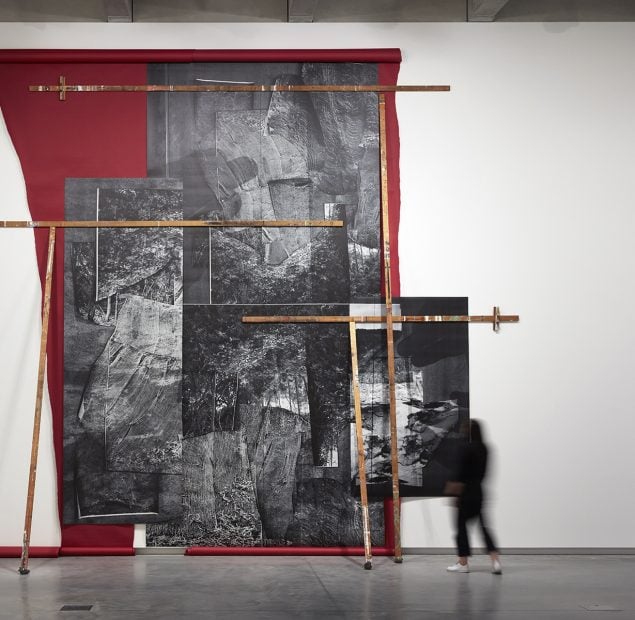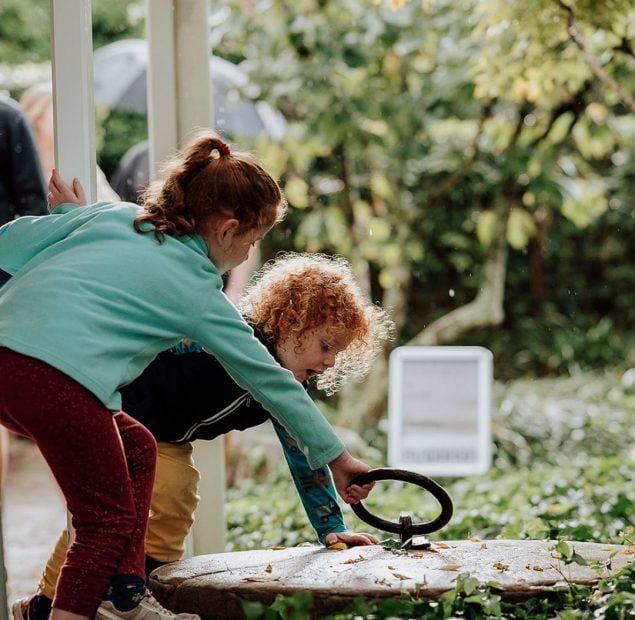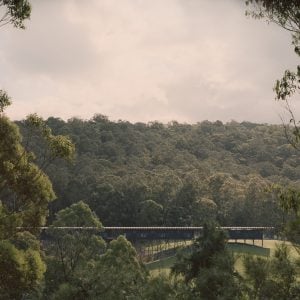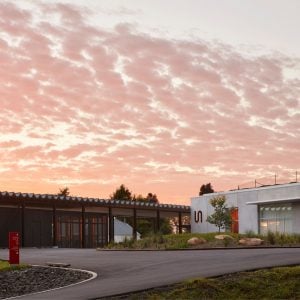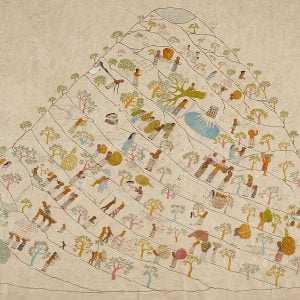19th Century
The Homestead
The two-storey stone Homestead at was completed in 1866, prompted by the need for increased room for the growing Mackenzie family. It was built of local sandstone and timber, with lime mortar made from shell deposits collected downstream. The Homestead was sited on high ground above the flood level of the river, taking advantage of cooling breezes and providing views across the property. Doors, windows and all internal fine joinery were of locally cut red cedar with the exception of the floors which were hardwood. Ceilings were lined with wide planks of red cedar. The Mackenzie family lived in their new house at Bundanon from 1866.
The first house built by Dr Mackenzie at Bundanon was on the ridgeline west of Haunted Point overlooking the river flats. The hearth and other footings from the original cedar homestead remain. Following floods in 1860 the Mackenzies hastened to complete the current sandstone and cedar house.
The available evidence indicates that the Homestead, completed in 1866, was constructed using well detailed machine sawn timber in the roof, floors and ceilings. Machine sawn hardwood joists are visible below the stairs while the wide boards of the cedar ceilings downstairs show large diameter machine saw marks in some places.
The Garden
Around the time of the building of the homestead the Mackenzies started the garden. Some of the first plantings were the landmark Bunya pines to the south. These were to assist visitors coming up the river to identify the location of the house.
Similarly the Norfolk Island pine and the Cook Island pine planted to the west greeted visitors who came in via the track that is now our road. Dating from the 1860s these 150 year old trees have a potential lifespan of 400 years.
The original nineteenth century garden was a productive working garden that sustained the families who lived and worked at Bundanon.
The orchard and vegetable garden were located to the north east of the homestead, between the ridge line and the 1870s constructed dam. The introduction of coral trees to the landscape dates from 1950 at the earliest.
During the late 1920s the property appears to have changed slowly. Changes were limited to removal of one of the early slab sheds at the stockyards and the addition of new sheds on the ‘common’.
Kitchen & Servants Quarters
By 1866 the house and a skillion roofed kitchen with stone chimney was completed. Over the following years the servant’s quarters, manager’s cottage and Singleman’s Hut were built. A smokehouse and produce store was also built north of the kitchen.
In the 1880s and 1890s the free standing kitchen, cistern and the slab barn (now revised as a studio in the Artists’ Complex) were finished. During the Warren’s occupancy, from 1958-68, the large timber room, originally the kitchen with skillion roof, was still attached to the rear of the homestead, however it was now used as a casual living room which housed a large billiard table.
Early 20th Century
The Homestead
By the early 1900s the Homestead was the focus of an estate which reflected the self-contained nature of the rural community at Bundanon. Service areas including a smithy, laundry and buggy shed were sited near the western gate to the homestead yard. To the north a range of service buildings, including a curing shed for hams and bacon, were located in treed areas which gave way in the east to large fenced vegetable and orchard plots above the dam. Post and rail and wire fences controlled stock movements and defined arable areas planted with maize and lucerne. Other buildings in the homestead yard included stables, stallion shed and maize store with below the homestead fence a 32 cow feed stall and 5 bails. Beyond the gate were stockyards, slab sheds, slab barn and pig pens. The need for quantities of clean water was evident in the number of galvanised iron rainwater tanks associated with the house and working buildings.
The onset of World War 1 saw a reduction in the numbers working on the property and afterwards there were a number of farm workers and servants families living on the site. The latter were accommodated in houses and huts on the property including the old homestead; three timber workers’ cottages, including the manager’s house, were located north of the main house with smaller ‘humpies’ or ‘huts’ in the vicinity of the slab barn near the western boundary of the property. A fourth timber worker’s cottage was erected around 1920 adjacent to the western-most slab barn.
The death of Kenneth Mackenzie and his daughter Helen, who were drowned on 29 January 1922, resulted in a decline in family involvement with farming at Bundanon. The Mackenzie family left Bundanon in 1926.
In 1927 when Bundanon was leased to Tenant famers Records show that buildings included a carpenter’s and blacksmith’s sheds, laundry, workshop, stables, buggy shed and a dairy and bails. In the late 1920s the property appears to have changed slowly. Changes were limited to removal of one of the early slab sheds at the stockyards and the addition of new sheds on the ‘common’.
The dam below the main house was lowered c.1945.
Although there was some modification and loss of ancillary working structures recorded in photographs of the 1920s and earlier, the property still retained its two remaining worker’s cottages, six staff rooms, a well-equipped schoolroom and the Singleman’s Hut in addition to most early homestead structures. Between 1946 and 1949 Worker’s Cottage 1 was extended to the north by the addition of a gabled kitchen. A new barn was built later to replace the two slab sheds west of the western entrance to Bundanon Common. North of the stockyards new enclosures with small shelters were used as pig pens.
In 1957 Neil Boomer from Kangaroo Valley leased the property but was soon replaced by the Warren family. In 1968 Bundanon was sold to Sandra and Michael Anthony McGrath and Francis McDonald, art dealers, for $56,000.
Late 20th century
The Homestead
Significant changes to the garden occurred under the ownership of the McGraths and McDonald (1968-79) and saw the transition of the property from farm to retreat.
The majority of the working buildings around Bundanon homestead were removed and the grounds extensively landscaped. A breezeway was added in 1969 to link the homestead to the weatherboard kitchen and servants’ quarters, and a pergola was added in between.
Inside, the downstairs front bedroom was converted into a library with extensive shelving, the rear room became a dining room and upstairs a bedroom was converted into a bathroom. Electricity and running water were added and much of the cedar trim for windows, doors and skirting boards was painted gloss enamel white.
The Gardens
Guided by English garden designer John Codrington they established the cottage garden, planted wisteria and ornamental grape in the kitchen courtyard area and mass planted Robinias to create a park-like feeling running down to the dam, which they enlarged. An island was added to protect the ducks and Weeping Willows planted along the edge.
During this period fast growing deciduous trees, including American and Lombardy Poplars and Weeping Willows were added to the palette of plants in the garden providing a quick impact.
The cottage/sculpture garden to the west of the house is enclosed by Cherry Laurel and Chinese Holly and was designed to reflect the traditional walled gardens of England. The hedges provide separation of the sculpture garden from the surrounding parkland area, which in turn provides separation from the bush.
According to an article in Vogue Living Australia, 1977, by John Mortimer, the homestead landscaping was described as “a formal garden behind the house, but the rest, including an artificial lake, has a completely natural look”.
In 2008 Bundanon commissioned a Landscape Plan of Management (completed in 2011) for the garden which provides guidance for the care of this organic, changing, piece of our heritage.

